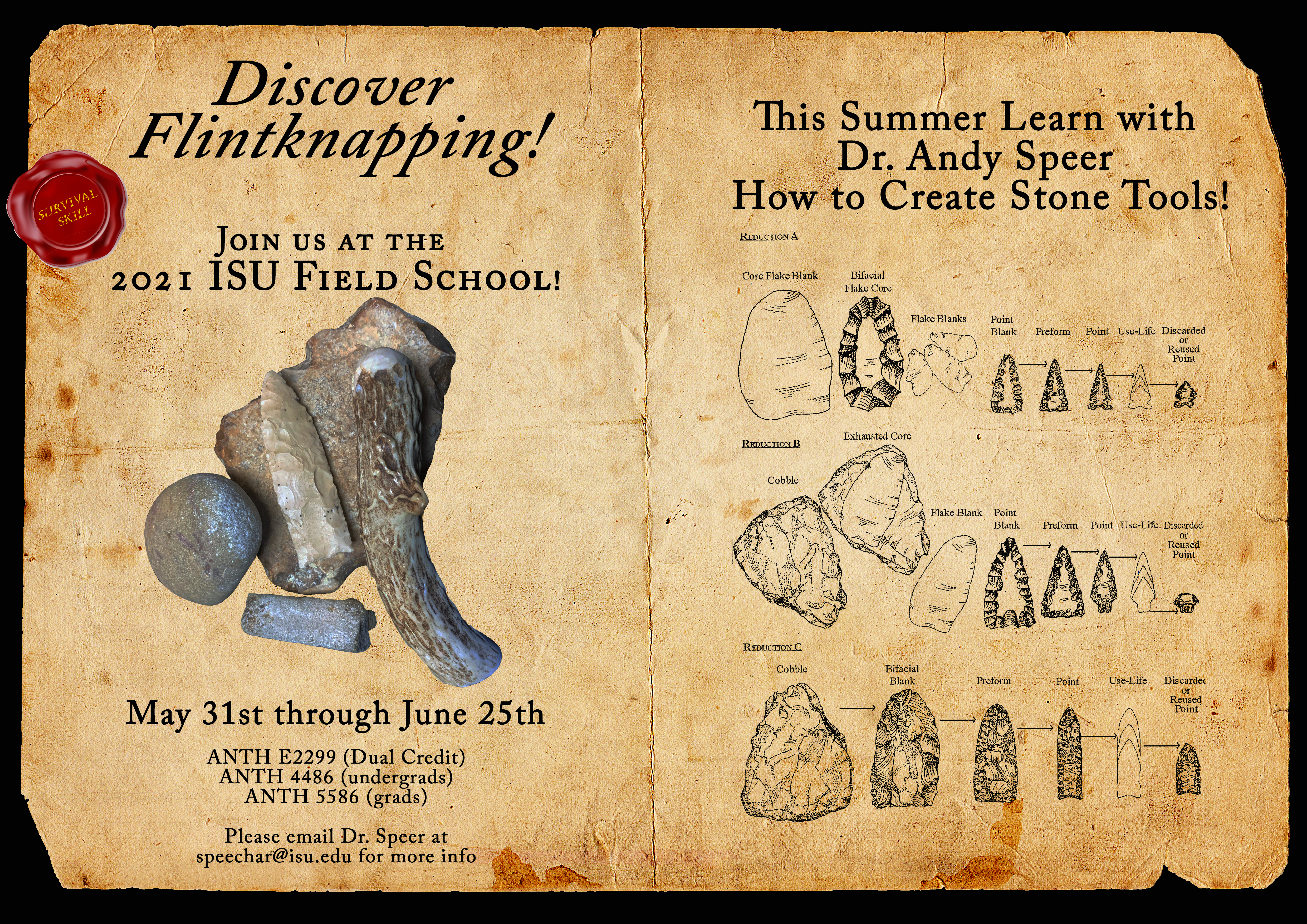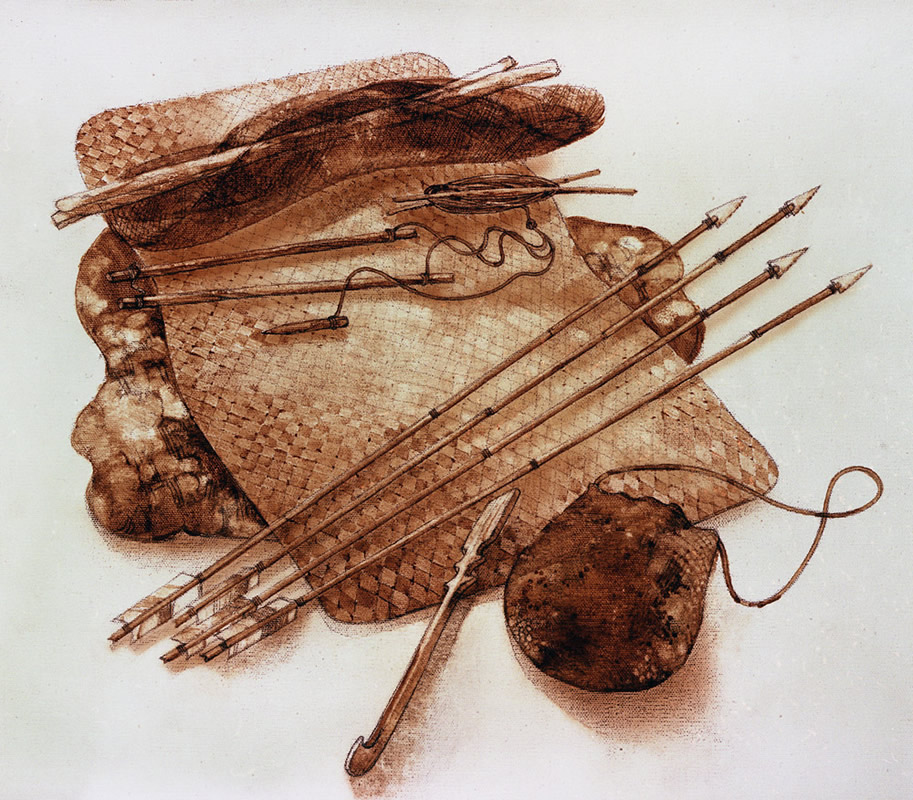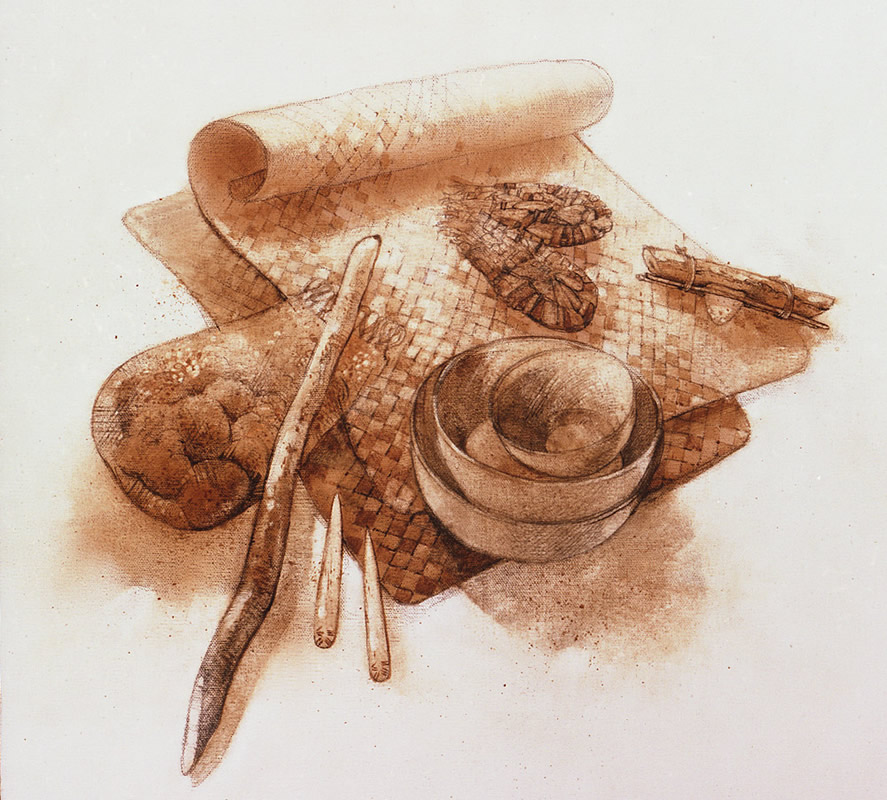2021 Archaeology Field School

Flintknapping is the creation of stone tools. Learning to make stone tools is an essential survival skill that could one day save your life. Stone tools have been used by human beings to survive for over 2.6 million years. Only around 10,000 years ago did we begin to use metal tools. This means we have used stone tools for nearly all of our existence! You can find tools at archaeological sites around the world in nearly all time periods. Learning how make stone tools is a highly valuable skill for archaeologists to learn.
If you would like to join us this year and learn to flintknap, please fill out the following application:
Application - 2021 ISU Archaeology Field School
All participants will be required to sign a waiver and students under 18 years old will need a parent’s signature. This form is available to download here:
Waiver - 2021 Archaeology Field School
Please return your application and other documents to Dr. Andy Speer at:
The field school will take place at Idaho State University outside Graveley Hall from Monday, May 31st through Friday July 25th. The schedule is listed below for your convenience. All of the tools and rock you need will be provided. lf you are unable to bring a sack lunch each day there are available food vendors in the Pond Student Union Building (SUB) just across the quad.
This year’s field school will consist of 4 weeks of training in how to create stone tools using traditional methods. Traditional methods is the use of only materials available to hunter-gatherers including antler, bone, ivory, wood, and stones. If the method was available to a specific culture, region, and time period you are trying to replicate, you can use it. The field school will teach you all of the terminology of stone tool production and the many different kinds of tools you can make. You will be able to identify what activity took place just from looking at the debris left behind. As you become more proficient you can even tell the skill of the person!
Supplies and Schedule
After you learn to make stone tools you will join an elite group of only a small number of modern humans who know this lost art. You will come to know the tremendous challenges and rewards of learning this skill and the relaxing Zen-like state of mind when you create. Come learn with us, listen to the rhythmic sounds of the breaking of the rock, and find the magic of connecting with our ancestors.

Above: An artist’s rendering of an assemblage of tools and weapons that may have outfitted an Archaic hunter. Image courtesy of the Witte Museum.
You will be given to keep:
- 50 lbs of dacite (an obsidian-like rock)
- 1 small antler billet
- 1 large antler billet
- 1 antler tine pressure flaker
- 1 hard hammerstone, granite
- 1 soft hammerstone, sandstone
- 1 abrader, either quartzite or carborundum
- 1 double-stitched boar hide lap pad
- 5' x 5' canvas tarp
- Museum quality plastic bags
- Sharpies

This artist’s rendering shows a digging stick, bone awls, agave knive, basket containers, sandals, and woven mats or petates. TAMU Anthropology archives.
You will need to bring:
- 1 backpack, sack, or container to hold your work
- 1 pair of work gloves
- 1 set of eye protection
- 1 towel
- Band-aids (assorted)
Recommended:
- Sunscreen
- Hat (no Fedoras!)
- Portable folding chair
- Please no open toed shoes or sandals! (Having sharp rocks in your feet hurts!)
2021 Field School Schedule
May 31st through June 25th
- Week 1: You will learn how to make usable flakes for cutting tasks, the terminology, tools, and techniques.
- Week 2: You will learn how to make unifaces from thick flakes that we can then turn into scrapers, adzes, woodworking tools, etc..
- Week 3: You will learn how to make bifaces (stone tool that is flaked on both sides) and what is a thin versus thick biface and why you need to learn this.
- Week 4: You will learn how to turn bifaces into drills, projectile points, knives, etc..
- Beyond Week 4: For those who want to go further I will provide them with guidance on how to haft their tools and make them functional. After the field school I will be happy to answer any questions you have about flintknapping and provide guidance should you decide to embark on the lifelong quest of becoming a master!
Daily Schedule:
High School Students
- 9:00AM-10:30AM – Learning the Techniques
- 10:30AM-12:00PM – Practicing the Techniques
- 12:00PM – Dismissed
College Students
- 9:00AM-10:30AM – Learning the Techniques
- 10:30AM-12:00PM – Practicing the Techniques
- 12:00PM-12:30PM – Lunch Break
- 12:30PM-3:30PM – Practicing and Observing Flake Patterns
